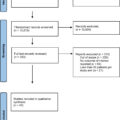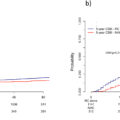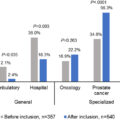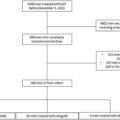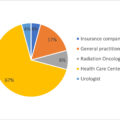Highlights
- •
Immediate postoperative intravesical chemotherapy is underutilized.
- •
No demonstrated risk of complications exists following its use.
- •
Elective surgery and shorter operative times are associated with higher utilization.
Abstract
Purpose
The use of immediate postoperative intravesical chemotherapy (IVC) following transurethral resection of bladder tumor (TURBT) has been shown to reduce the rate of recurrence of nonmuscle invasive bladder cancer. Historically, utilization of IVC following TURBT has been low. We sought to determine the rate of immediate postoperative IVC following TURBT, as well as assess factors that may influence its use.
Methods
We utilized the American College of Surgeons National Surgical Quality Improvement Program (ACS-NSQIP) database to assess the rates of IVC between the years 2016 to 2021. All patients who underwent TURBT based on appropriate procedure codes were initially included. Patients with an additional procedure code for the administration of IVC were identified.
Results
From 2016 to 2021, 50,295 patients underwent TURBT for bladder cancer. There were 21,544 (43%) small, 18,135 (36%) medium, and 10,616 (21%) large tumors treated. In total, 2,833 (5.6%) patients received IVC. Use of IVC was associated with surgery performed in an elective setting, those who did not receive preoperative blood transfusion, and shorter operative time. Receipt of chemotherapy was more common in the later years examined.
Conclusions
The rate of use of IVC remains very low. Ongoing study and improvement initiatives are in place, though these predominantly are assessing academic centers. Further study and quality improvement should be performed and include community practice settings.
1
Introduction
Bladder cancer is the tenth most commonly diagnosed malignancy in the world, with increasing incidence and prevalence [ ]. The management of nonmuscle invasive bladder cancer (NMIBC) is particularly troublesome given a very high rate of recurrence (up to 80%) even with guideline-directed treatment, leading to a significant financial impact on the healthcare system [ , ]. A number of strategies have been employed to reduce the rate of recurrence, with the most successful and well-supported being the use of maintenance intravesical Bacillus Calmette-Guérin (BCG) in the intermediate and high-risk subgroups. Ongoing BCG shortages have made access more challenging, and alternative regimens such as sequential Gemcitabine / Docetaxel are in use and being investigated in an ongoing fashion [ , ].
In addition to maintenance therapies with intravesical agents, there also exists data to support the use of immediate postoperative intravesical chemotherapy (IVC) following transurethral resection of bladder tumors (TURBT) in order to destroy circulating tumor cells within the bladder lumen and residual cells at the site of resection. Sylvester et al performed a systematic review and meta-analysis of 13 randomized trials that demonstrated a decreased risk of recurrence by 35% and a decreased 5-year recurrence rate from 58.8% to 44.8% when comparing immediate IVC after TURBT to TURBT alone, although the instillation did not prolong the time to progression or time to death from bladder cancer [ ]. More recently, Messing et al added further evidence in the use of immediate IVC by demonstrating a decreased rate of recurrence in low-grade tumors when using intravesical Gemcitabine versus saline instillation [ ]. The National Comprehensive Cancer Network (NCCN), American Urological Association (AUA), and European Association of Urology (EAU) guidelines recommend the instillation of immediate postoperative IVC following TURBT in the absence of suspected bladder injury or perforation, though prior studies have demonstrated an exceedingly low rate of utilization of immediate postoperative IVC [ ].
In order to gain a better and more up to date characterization of the practice pattern of immediate postoperative IVC, we utilized the American College of Surgeons National Surgical Quality Improvement Program (ACS-NSQIP) to extract data regarding those who underwent concurrent TURBT and instillation of postoperative IVC.
2
Methods
The ACS-NSQIP database was queried to collect data on patients who underwent TURBT between January 1, 2016 and December 31, 2021. The ACS-NSQIP database is a nationally validated, risk-adjusted, and outcomes-based program. It encompasses 719 centers both inside and outside the United States.
Corresponding Current Procedural Terminology (CPT) codes 52234 (“small”), 52235 (“medium”), and 52240 (“large”) were used to identify patients who underwent TURBT. Patients with a diagnosis of disseminated or metastatic cancer were excluded. CPT code 51720 was used to identify patients who received IVC as either an additional or concurrent procedure. In addition to overall rates of usage, operative time, length of hospital stay, elective nature of surgery, and perioperative complications were evaluated.
Statistical analysis was performed using R version 4.2.3 (R Core Studio 2023). Univariable logistic regression was used to identify factors associated with receipt of intravesical chemotherapy and risk of postoperative complications. The Wilcoxon rank sum test was used to compare continuous variables between groups, and the Pearson’s Chi-squared test or Fisher’s exact test were used for categorical variables. A P -value of <0.05 was considered statistically significant.
3
Results
Between the years of 2016 to 2021, 50,295 patients underwent TURBT for nonmetastatic disease. Of these, 2,833 (5.6%) received immediate postoperative IVC.Patient characteristics are reported in Table 1 . Patients who received IVC tended to be younger). Fewer patients were categorized as “inpatient” in the IVC group. Operative time was shorter for the IVC group.
| Characteristic | No chemotherapy = 47,462 a | Received chemotherapy = 2,833 a | P -value b |
|---|---|---|---|
| Age | 72 (64, 79) | 71 (64, 78) | 0.004 |
| Sex | 0.13 | ||
| Female | 11,315 (24%) | 640 (23%) | |
| Male | 36,145 (76%) | 2,193 (77%) | |
| Unknown | 2 | 0 | |
| Race | <0.001 | ||
| Asian | 1,246 (2.6%) | 79 (2.8%) | |
| Black | 2,465 (5.2%) | 127 (4.5%) | |
| White | 32,101 (68%) | 2,235 (79%) | |
| Other/unknown | 11,650 (25%) | 392 (14%) | |
| Body mass index (BMI) | 28.1 (24.7, 32.0) | 28.6 (25.1, 32.5) | <0.001 |
| TURBT type (by CPT code) | <0.001 | ||
| Small | 20,357 (43%) | 1,187 (42%) | |
| Medium | 17,004 (36%) | 1,131 (40%) | |
| Large | 10,101 (21%) | 515 (18%) | |
| Inpatient/outpatient | <0.001 | ||
| Inpatient | 7,489 (16%) | 132 (4.7%) | |
| Outpatient | 39,973 (84%) | 2,701 (95%) | |
| Operative time (min) | 26 (16, 43) | 25 (17, 38) | 0.013 |
| Operative time | <0.001 | ||
| 0–30 min | 27,717 (58%) | 1,776 (63%) | |
| 31–60 min | 13,840 (29%) | 829 (29%) | |
| 61–90 min | 3,847 (8.1%) | 165 (5.8%) | |
| >90 min | 2,058 (4.3%) | 63 (2.2%) | |
| Case acuity | <0.001 | ||
| Elective | 7,952 (17%) | 626 (22%) | |
| Urgent | 410 (0.9%) | 21 (0.7%) | |
| Emergent | 114 (0.2%) | 0 (0%) | |
| Not recorded | 38,986 (82%) | 2,186 (77%) |
b Wilcoxon rank sum test; Pearson’s Chi-squared test; Fisher’s exact test.
Factors evaluated for impact of receipt of IVC are noted in Table 2 . In a univariable logistic regression model, BMI was associated with increased odds of receiving IVC. Outpatient status had the largest effect size. Compared to those with a small tumor (based on CPT code for TURBT), patients with a medium tumor were more likely to receive IVC and those with a large tumor were less likely to receive IVC. Compared to patients who were classified as independent preoperatively, those who were classified as partially or totally dependent were significantly less likely to receive IVC. There was no difference with respect to age, sex, diabetes, or smoking status. When multivariable analysis was performed, accounting for relevant variables, minor differences were seen ( Table 3 ). While BMI and outpatient status remained significant, differences in tumor size based on CPT code were no longer noted to be significant.
| Characteristic | N | OR a | 95% CI a | P -value |
|---|---|---|---|---|
| Age | 48,193 | 1.00 | 0.99, 1.00 | 0.13 |
| Sex | 50,293 | |||
| Female | — | — | ||
| Male | 1.07 | 0.98, 1.18 | 0.13 | |
| Race | 50,295 | |||
| Asian | — | — | ||
| Black | 0.81 | 0.61, 1.09 | 0.2 | |
| White | 1.10 | 0.88, 1.39 | 0.4 | |
| Other/unknown | 0.53 | 0.42, 0.68 | <0.001 | |
| Body mass index (BMI) | 50,295 | 1.01 | 1.01, 1.02 | <0.001 |
| Pre-op transfusion within 72h | 50,295 | |||
| No | — | — | ||
| Yes | 0.16 | 0.06, 0.35 | <0.001 | |
| Inpatient/outpatient | 50,295 | |||
| Inpatient | — | — | ||
| Outpatient | 3.83 | 3.23, 4.59 | <0.001 | |
| Operative time (min) | 50,295 | 1.00 | 0.99, 1.00 | <0.001 |
| Operative time | 50,295 | |||
| 0–30 min | — | — | ||
| 31–60 min | 0.93 | 0.86, 1.02 | 0.12 | |
| 61–90 min | 0.67 | 0.57, 0.79 | <0.001 | |
| >90 min | 0.48 | 0.37, 0.61 | <0.001 | |
| TURBT type (by CPT code) | 50,295 | |||
| Small | — | — | ||
| Medium | 1.14 | 1.05, 1.24 | 0.002 | |
| Large | 0.87 | 0.79, 0.97 | 0.013 | |
| Year | 50,295 | 1.06 | 1.04, 1.08 | <0.001 |
Stay updated, free articles. Join our Telegram channel

Full access? Get Clinical Tree



